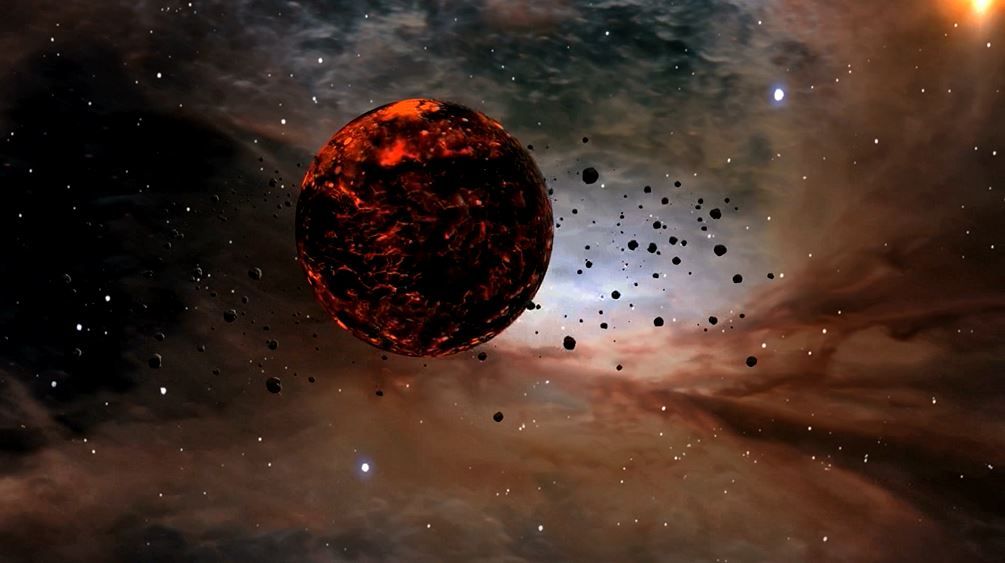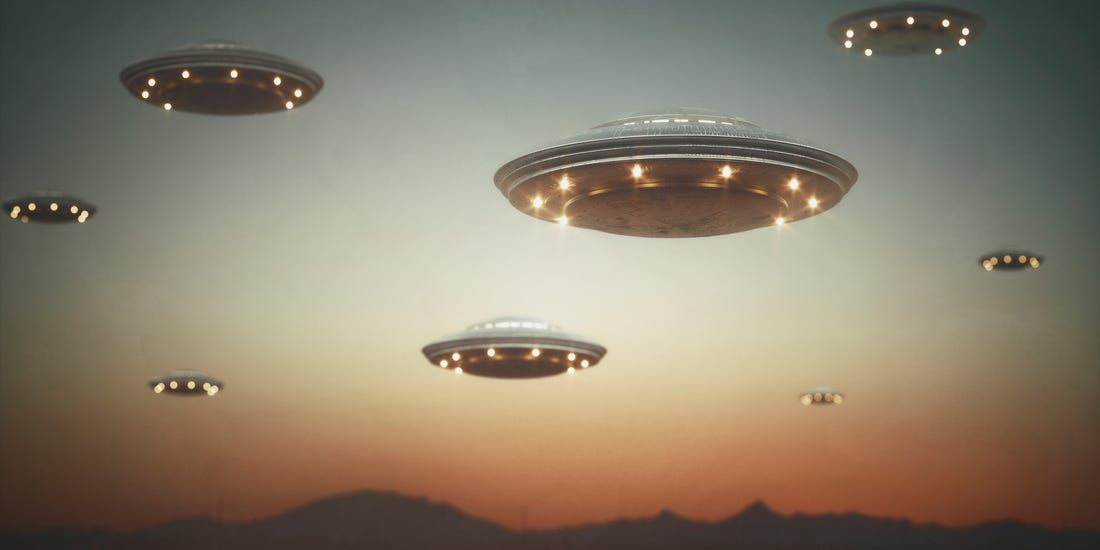Atmospheric Pollution Could Signal Advanced Extraterrestrial Civilization
Article by Amit Malewar February 11, 2021 (techexplorist.com)
• Astronomers have detected over 4,000 planets orbiting other stars. Some of these exoplanets have conditions suitable for life. Since exoplanets are so distant, scientists cannot look for signs of life or civilization by sending spacecraft to these distant worlds. The presence of a combination of gases like oxygen and methane in a planet’s atmosphere could be a sign of life or ‘biosignature’. Likewise, a sign of technology (ie: pollution) on an exoplanet, called a ‘technosignature’, could be the byproduct of an industrial process.
• A new NASA research study examines nitrogen dioxide (NO2) as a possible technosignature. “On Earth, about 76 percent of NO2 emissions are due to industrial activity,” says Giada Arney, co-author of the paper at NASA Goddard. “Since NO2 is also produced naturally, scientists will have to carefully analyze an exoplanet to see if there is an excess that could be attributed to a technological society.”
• In this study, scientists used computer modeling to predict whether NO2 pollution would produce a detectable signal. Atmospheric NO2 strongly absorbs certain colors (wavelengths) of visible light, which can be seen by observing the light reflected from an exoplanet as it orbits its star. They found that a civilization on an Earth-like planet orbiting a Sun-like star, producing the same amount of NO2 as ours could be detected up to about 30 light-years away using a future large NASA telescope. One light-year is the distance light travels in a year, almost 6 trillion miles. Our galaxy is about 100,000 light-years across.
• The study group also found that cooler and far more common stars than our Sun, such as K and M-type stars, will deliver a stronger, more easily detected NO2 signal. “If we observe NO2 on another planet, we will have to run models to estimate the maximum possible NO2 emissions one could have just from non-industrial sources” to calculate the industrial-sourced NO2, said Arney.
• Jacob Haqq-Misra, a co-author of the paper at the Blue Marble Institute of Science, Seattle, Washington, noted that, “Other studies have examined chlorofluorocarbons (CFCs) as possible technosignatures. CFCs were manufactured chemicals used as refrigerants until they were phased out because of their role in ozone depletion. CFCs are also a powerful greenhouse gas that could terraform a planet like Mars by providing additional warming from the atmosphere.” They would be an obvious technosignature since CFCs aren’t produced naturally, as far as we know. It is likely that NO2 would be more prevalent, by comparison, as a general byproduct of any combustion process.”
• This work was funded by NASA Goddard’s Sellers Exoplanet Environments Collaboration and the NASA Exobiology program. supported by NASA’s Planetary Science Division’s Research Program. This work was performed as part of NASA’s Virtual Planetary Laboratory through the NASA Astrobiology Institute and by the NASA Astrobiology Program as part of the Nexus for Exoplanet System Science (NExSS) research coordination network.
• [Editor’s Note] This article proves that NASA is just as complicit as the more obvious deep state organizations, such as SETI, in spending a ton of money and publicity to “search” for extraterrestrial life when it is right under (above) our noses. They trot out highly credentialed establishment scientists to spout a bunch of technical jargon about how they are looking for this ‘techosignature’ or that ‘biosignature’ looking for evidence of a habitable or technologically advanced civilization. Think of all of the time and effort – and deception – that our society will save and redirect once we have full disclosure of the long-standing presence of advanced extraterrestrial beings that have been interacting with our secret space programs for many decades. We already have the answers to all of the questions that deep state scientists continue to dwell on, solely for the theatrics of making average people think that smart people are doing everything they can to detect life beyond this Earth, thereby promoting the outrageous lie that humanity here on Earth is the only intelligent life that we have found in the universe.

Nitrogen dioxide is part of a group of gaseous air pollutants produced due to road traffic and other fossil fuel combustion processes. In

the lower atmosphere (about 10 to 15 kilometers or around 6.2 to 9.3 miles), NO2 from human activities dominate compared to non-human sources. Therefore, observing NO2 on a habitable planet could potentially indicate the presence of industrialized civilization.
Until now, astronomers have detected over 4,000 planets orbiting other stars. Some of these planets are habitable; some have conditions suitable for life. Since exoplanets are so distant, scientists cannot look for signs of life or civilization by sending spacecraft to these distant worlds.
The presence of a combination of gases like oxygen and methane in the atmosphere could be a sign of life or biosignature. Likewise, a sign of technology on an exoplanet, called a techno signature, could be what’s considered pollution here on Earth — the presence of a gas that’s released as a byproduct of an overall industrial process, such as NO2.
 A new NASA research suggests that we might detect advanced extraterrestrial civilization using its atmospheric pollution. This study is the first time NO2 has been examined as a possible technosignature.
A new NASA research suggests that we might detect advanced extraterrestrial civilization using its atmospheric pollution. This study is the first time NO2 has been examined as a possible technosignature.
Jacob Haqq-Misra, a co-author of the paper at the Blue Marble Institute of Science, Seattle, Washington, said, “Other studies have examined chlorofluorocarbons (CFCs) as possible technosignatures, which are industrial products that were widely used as refrigerants until they were phased out because of their role in ozone depletion. CFCs are also a powerful greenhouse gas that could terraform a planet like Mars by providing additional warming from the atmosphere. As far as we know, CFCs are not produced by biology, so they are a more obvious technosignature than NO2. However, CFCs are particular manufactured chemicals that might not be prevalent elsewhere; NO2, by comparison, is a general byproduct of any combustion process.”
In this study, scientists used computer modeling to predict whether NO2 pollution would produce a practical signal to detect with current and planned telescopes.
Atmospheric NO2 strongly absorbs some colors (wavelengths) of visible light, which can be seen by observing the light reflected from an exoplanet as it orbits its star. They found that for an Earth-like planet orbiting a Sun-like star, a civilization producing the same amount of NO2 as ours could be detected up to about 30 light-years away with about 400 hours of observing time using a future large NASA telescope observing at visible wavelengths.
FAIR USE NOTICE: This page contains copyrighted material the use of which has not been specifically authorized by the copyright owner. ExoNews.org distributes this material for the purpose of news reporting, educational research, comment and criticism, constituting Fair Use under 17 U.S.C § 107. Please contact the Editor at ExoNews with any copyright issue.






 New tools
New tools